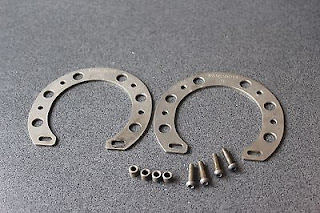The Brooklyn neighborhood in which I lived until I was 13 was mainly Italian-American. There were, however, a number of Jewish people, most of whom were at least somewhat religious, though not to the degree of the Hasidim.
Anyway, many years later, I would be married to a Jewish woman and teach in an Orthodox yeshiva. Yes, I wore a yarmulke and dressed more or less like my students: shirt and tie, the latter of which came off, along with the yarmulke, as soon as I left the premises.
Needless to say, I learned all sorts of interesting things from those experiences. For example, I found out that when a Torah scroll is destroyed or simply rendered unusable, a funeral service is held for it, as if it were a person.
When I learned about that, it actually made perfect sense to me. For one thing, the Torah and the Bible both say that in the beginning, there was the word. So, treating the Torah as a sentinent being is an acknowledgement of the power of words (or The Word). If I didn't think words had such potency, I probably wouldn't be a writer or English teacher!
But it also made sense to me in another way: Sometimes people treat objects they value highly as if they were people. Thus, one way to retaliate, get revenge or simply to upset someone is to damage or destroy something that person values. Sometimes one member of a couple will do that to, say, the other member's favorite possession--or a thing, like a musical instrument, on which the other member spends a lot of time. Of course, a spouse's or partner's devotion to it, or any past time, is blamed for the state of the relationship.
I was reminded of that when I read about Leeann Nicole Hood of Fort Walton Beach, Florida. On Saturday, 3 June, her boyfriend "dropped the bomb": He said he was breaking up with her. During the ensuing fight, she took out a knife and stabbed---his bicycle.
Yes, you read that right: She stabbed his bicycle.
Then he took the knife away from her, but she managed to grab his own knife out of his pocket--and stab him in his left arm.
Ms. Hood was arrested and is currently in Okaloosa County Jail on a $5000 bond. She's been charged with aggravated battery with a deadly weapon (the knife), which is a felony.
I wish the boyfriend--who wasn't named in the article--a speedy recovery, for him and his bike.
Speaking of which: I have to wonder where on the bike Ms. Hood stuck her knife. For the sake of the young (I assume) man--and the bike--I hope it was some easily repairable or replaceable part like a tire. That would certainly be easier to deal with than an arm wound, however superficial.
This incident begs the question (at least in my mind) of whether the boyfriend regards the attack on his bike, or his body, as the greater crime.
Anyway, many years later, I would be married to a Jewish woman and teach in an Orthodox yeshiva. Yes, I wore a yarmulke and dressed more or less like my students: shirt and tie, the latter of which came off, along with the yarmulke, as soon as I left the premises.
Needless to say, I learned all sorts of interesting things from those experiences. For example, I found out that when a Torah scroll is destroyed or simply rendered unusable, a funeral service is held for it, as if it were a person.
When I learned about that, it actually made perfect sense to me. For one thing, the Torah and the Bible both say that in the beginning, there was the word. So, treating the Torah as a sentinent being is an acknowledgement of the power of words (or The Word). If I didn't think words had such potency, I probably wouldn't be a writer or English teacher!
But it also made sense to me in another way: Sometimes people treat objects they value highly as if they were people. Thus, one way to retaliate, get revenge or simply to upset someone is to damage or destroy something that person values. Sometimes one member of a couple will do that to, say, the other member's favorite possession--or a thing, like a musical instrument, on which the other member spends a lot of time. Of course, a spouse's or partner's devotion to it, or any past time, is blamed for the state of the relationship.
I was reminded of that when I read about Leeann Nicole Hood of Fort Walton Beach, Florida. On Saturday, 3 June, her boyfriend "dropped the bomb": He said he was breaking up with her. During the ensuing fight, she took out a knife and stabbed---his bicycle.
Yes, you read that right: She stabbed his bicycle.
Then he took the knife away from her, but she managed to grab his own knife out of his pocket--and stab him in his left arm.
Ms. Hood was arrested and is currently in Okaloosa County Jail on a $5000 bond. She's been charged with aggravated battery with a deadly weapon (the knife), which is a felony.
I wish the boyfriend--who wasn't named in the article--a speedy recovery, for him and his bike.
Speaking of which: I have to wonder where on the bike Ms. Hood stuck her knife. For the sake of the young (I assume) man--and the bike--I hope it was some easily repairable or replaceable part like a tire. That would certainly be easier to deal with than an arm wound, however superficial.
This incident begs the question (at least in my mind) of whether the boyfriend regards the attack on his bike, or his body, as the greater crime.









